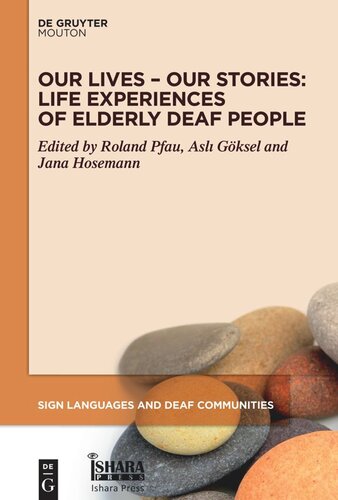

Most ebook files are in PDF format, so you can easily read them using various software such as Foxit Reader or directly on the Google Chrome browser.
Some ebook files are released by publishers in other formats such as .awz, .mobi, .epub, .fb2, etc. You may need to install specific software to read these formats on mobile/PC, such as Calibre.
Please read the tutorial at this link: https://ebookbell.com/faq
We offer FREE conversion to the popular formats you request; however, this may take some time. Therefore, right after payment, please email us, and we will try to provide the service as quickly as possible.
For some exceptional file formats or broken links (if any), please refrain from opening any disputes. Instead, email us first, and we will try to assist within a maximum of 6 hours.
EbookBell Team

4.3
78 reviewsSign languages are non-written languages. Given that the use of digital media and video recordings in documenting sign languages started only some 30 years ago, the life stories of Deaf elderly signers born in the 1930s-1940s have – except for a few scattered fragments in film – not been documented and are therefore under serious threat of being lost.
The chapters compiled in this volume document important aspects of past and present experiences of elderly Deaf signers across Europe, as well as in Israel and the United States. Issues addressed include (i) historical events and how they were experienced by Deaf people, (ii) issues of identity and independence, (iii) aspects of language change, (iv) experiences of suppression and discrimination. The stories shared by elderly signers reveal intriguing, yet hidden, aspects of Deaf life. On the negative side, these include experiences of the Deaf in Nazi Germany and occupied countries and harsh practices in educational settings, to name a few. On the positive side, there are stories of resilience and vivid memories of school years and social and professional life.
In this way, the volume contributes in a significant way to the preservation of the cultural and linguistic heritage of Deaf communities and sheds light on lesser known aspects against an otherwise familiar background.
This publication has been made possible within the SIGN-HUB project, which has received funding from the European Union’s Horizon 2020 research and innovation programme.